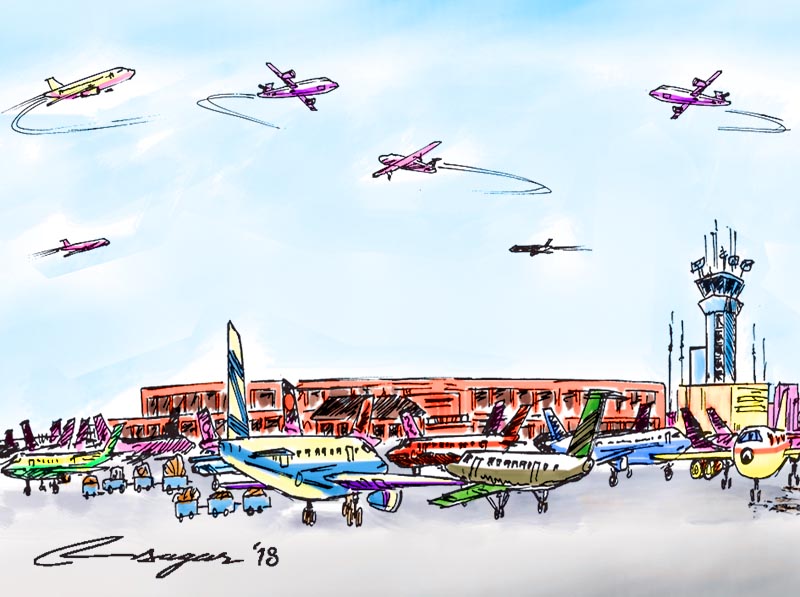Decades-long legacy of TIA gradually being destroyed
- Custodians of TIA have systematically decimated its original aesthetics
Kathmandu, December 29
Stakeholders have warned that the rampant destruction of legacy in the name of development has now become the norm at the country’s sole international airport in Kathmandu.
As the allotment of funds to the Tribhuvan International Airport (TIA) has remained lopsided since the inception of Civil Aviation Authority of Nepal two decades ago, the custodians of the airport in the last two decades have systematically
decimated the original aesthetics in the name of modernisation or capacity enhancement, or in other words need for wanton spending.
For instance, the terminal building inaugurated in 1990 by the late king Birendra had been designed by a Canadian consortium to reflect Nepali architecture theme.
“The recent call by the prime minister to make TIA a boutique airport essentially implies an airport with a difference, unlike the soul-less steel and glass structures seen the world over, and is perhaps a call back to the good old times,” a senior official at the Ministry of Culture Tourism and Civil Aviation, said on condition of anonymity.
According to the official, the façades now — both land-side and air-side — stand blighted with numerous eyesores like water tanks, air-conditioning machines, wires and cables strung about haphazardly, while the Chinese brick masonry on the outside continues to beg for surface treatment to restore its gloss that was long lost.
“Not to speak of the ugly construction on the air-side in the name of terminal capacity expansion. The original carved-wooden passenger check-in desks in the terminal buildings have since long made way to bland Common Use Terminal Equipment (CUTE) terminals in the name of utility,” another retired engineer from CAAN added.
And now adding insult to injury to this senseless defacement, what else could be the purpose behind TIA shamelessly installing carpets over novel Godavari marble floorings that reflected originality or recklessly raising toilet floors in the name of renovation, except for the greed for commission?, he questioned.
It is unlikely that CAAN officials are unaware of the recent correction made by the Indira Gandhi International Airport in New Delhi of its very costly folly where it has commenced replacing 1.7 lakh square metres of the premium brown carpet with a hard flooring. “The IGI airport is known to have very deep pockets and yet it could not properly maintain western flooring.”
Stakeholders believe that the Tribhuvan International Airport along with the terminal building had been designed with a specific maximum capacity in the early 1980s and should have been allowed to stay as a monument to a bygone era, unless completely razed and rebuilt.
“It seems that CAAN has been overrun with technical people with little technical sense, let alone aesthetic sense, simply incapable of being entrusted with the charge of safekeeping a humble monument to a bygone era,” a senior pilot with the Nepal Airlines Corporation stated.
It seems that the peculiar practices at the Civil Aviation Authority of Nepal are no longer confined to aviation safety, as a result of which Nepali carriers are still deemed pariah in the European skies, and the disease has spread over to the sole international gateway to Nepal.
Despite the fact that the Civil Aviation Authority of Nepal Act only recognises the director general of CAAN as the competent authority on all aviation matters including airport operations, it is the position of the general manager at Tribhuvan International Airport that wields more power and influence — financial and political — a senior CAAN official shared.
“Interestingly, more often than not, the minister in charge of civil aviation is more in contact with the general manager of TIA than the director general of CAAN as the general manager of TIA is in regular contact with VIPs and VVIPs transiting through the gateway,” he said, adding, “Sadly, this power has never been put to good use but repeatedly squandered on satiating the greed of those in charge of the airport.”






